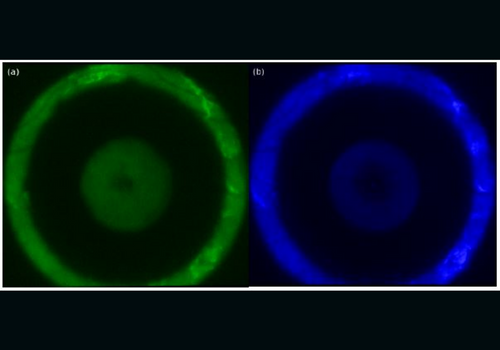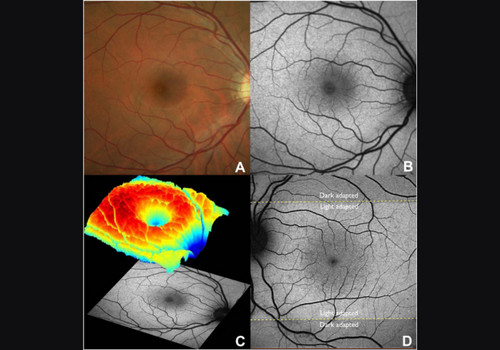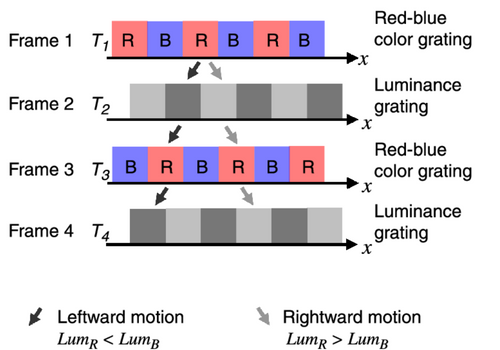Different Types of MPOD Measurement Technology
Posted by EyePromise on Mar 3rd 2023
There’s no question that macular pigment optical density (MPOD) is an important measurement for eye health and, more recently, overall health. However, the methods of measuring MPOD can vary quite a bit. Let’s review the options for measurement, their similarities, and their differences.
Fundus Reflectometry

Fundus reflectometry is an ocular measurement that determine MPOD based on the light reflected from the retina and the choroid. Utilizing 2 light wavelengths (a blue spectrum to be absorbed by the macular pigment and another that is not) fundus reflectometry compares the light reflected by the central and peripheral regions. This method also uses spectral analysis, which analyzes the spectrum of the reflected light from specific retinal regions.
Pros
- Objective
- Can obtain MPOD measurements in pediatric and special needs population
- Proven to be repeatable
- short test duration
Cons
- Relatively expensive
- Requires dilation
- Requires the need for precise alignment before the measurements are obtained
- Requires higher level of understanding and training to utilize and obtain measurements
Fundus Autofluorescence

This is another ocular method based on the intrinsic fluorescence or autofluroescence of lipofuscin, a waste product that builds up over time on the retinal pigment epithelium (RPE). The higher the MPOD, the less fluorescence. The MPOD values are calculated by measuring the differences in autofluorescence give off by the fovea and parafovea.
Pros
- Objective
- Good reliability when retesting
- Can obtain MPOD measurements in diverse population, including children
Cons
- Requires pupillary dilation
- Patient discomfort due to photopigment bleaching
- Can be difficult to read the imaging of some patients
Raman Spectroscopy

Raman spectroscopy has gained approval by researchers because it’s the only technique that measures the pigments themselves vs. analyzing other structures. It works by directing a monochromatic light through a molecule, resulting in two types of scattered light called elastic and inelastic. The inelastic shifts the original light wavelength, and this is known as the Raman shift and is molecule specific. When the absorption spectrum of the molecule and the original light are similar, the Raman shift enhances, which identifies the molecule. The macular pigments can be identified using this method.
Pros
- Sensitive and specific for macular carotenoids
- Can obtain MPOD measurements in subjects with low visual acuity
Cons
- Expensive
- Requires pupillary dilation
- Requires highly specialized training and devices
A Less Expensive/Invasive Option
A few devices on the market use this technology in a less precise manner. Through a measurement taken on the palm or finger, pressure is applied, and a low-energy blue light is flashed at the skin. The way the light reflects back to the devices gives a level of carotenoids in skin.
While these are faster, less invasive, and less expensive options than the other options for Raman spectroscopy measurement, these measurements give you a skin reading and use that measurement to extrapolate and, ultimately, estimate the carotenoids found throughout the body, including the eyes. But the truth is that of the hundreds of carotenoids found in the world, 20 of them make it into the serum, 7 into the skin, and only 2 make it to the eyes. According to the authors of the clinical paper Correlations between Macular, Skin, and Serum Carotenoids,
“Unfortunately, serum and skin carotenoid measurements have not correlated particularly well with assessments of ocular carotenoid status.”
Pros
- Objective, quick exam
- Gives an idea of systemic health and nutritional intake
- Relatively inexpensive
Cons
- Not a direct ocular measurement; estimation of macular carotenoids
- Potential variability in where you measure on the skin (i.e., what part of the palm, which finger, etc.)
- Potential variability in amount of pressure applied
Heterochromatic Flicker Photometry

Heterochromatic flicker photometry has been one of the most extensively used and researched methods of MPOD. Its measurement is based on the macular pigment’s absorption spectrum at the retina, specifically the macula and fovea. MPOD is determined by alternating between a short-wavelength blue light and a longer-wavelength green-yellow light, which the exam recipient perceives as a flicker.
The blue light is absorbed by macular pigment, whereas the green light is not. The exam recipient is to indicate when the target is flickering. MPOD is determined by comparing the amount of blue light needed at the fovea (high concentration of macular pigments) and the parafovea (low concentration of macular pigments) to perceive a flicker.
Pros
- Readily available to practitioners
- Inexpensive
- Noninvasive
- No need for pupillary dilation
- Direct measurement of the eye
- Good reliability, repeatability and accuracy
- Easy and short examination
Cons
- Subjective, but a high agreement with fundus reflectometry
- Some patients are not able to perceive the flickering light
- Not suitable for the study of young children and/or people with poor visual acuity
Motor Photometry

Motor photometry is similar to HFP, using two light sources with different wavelengths and calculating MPOD by measuring the difference in light need between the fovea and parafovea. However, this method uses the light to illuminate the bars of moving square wave gratings. The square moves at steady speed in a horizontal direction, and the light intensity adjusts until the moving square slows down or changes direction.
Pros
- No need for pupillary dilation
- Ease of use
- Relatively short exam
Cons
- Subjective
- Some patients are not able to perceive the flickering light
- Not suitable for the study of young children and/or people with poor visual acuity
When it comes to measuring such an important biomarker as MPOD, it’s best to consider all the ways available and determine which best fits your practice. If you’re interested in learning more about the latest in MPOD technology, contact EyePromise now!

